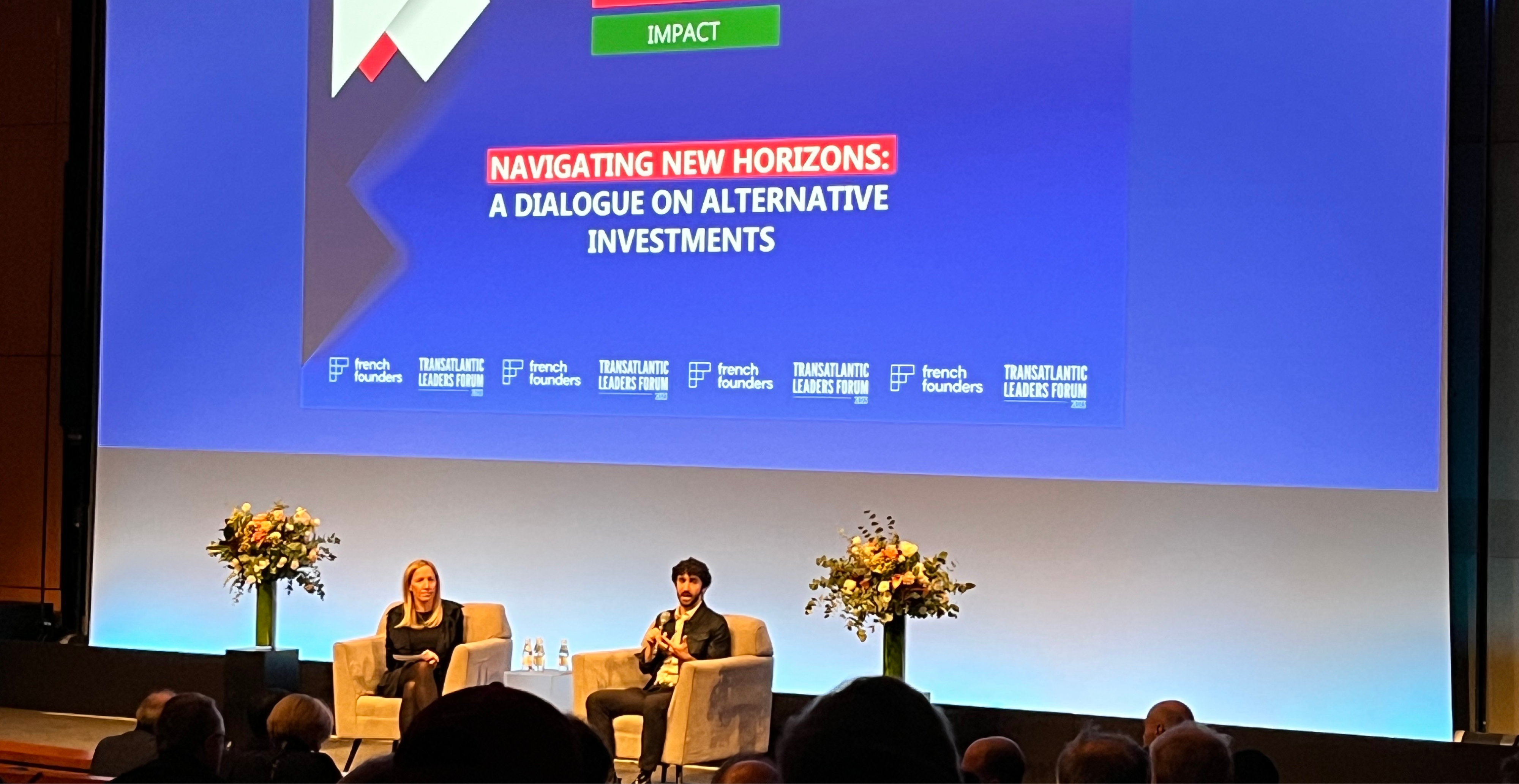Alternative Investments with Stephanie Richards and Tory Reiss
On Friday, November 3rd, our CEO and co-founder, Tory Reiss, joined Stephanie Richards, Managing Director for Goldman Sachs Alternative Capital Markets, at the Transatlantic Forum to discuss recent trends in alternative investing and the impact of technology on the sector.
Here were a few key highlights from their discussion.
Dispersion and manager selection will become increasingly important in the next 10 years
Tory and Stephanie both agreed that we are entering a new economic era in which manager selection will become much more important. During a bull market, many GPs or fund managers, are able to rely on multiple expansion for returns. However, during a bear market or in an increasing interest rate environment, dispersion among GPs becomes exaggerated. Thus, access to the top 25% of managers becomes necessary within alternative investing to set up a portfolio for success.
Allocate 20-25% into alternative investments
Goldman Sachs generally recommends that its clients allocate around 20% to 25% of their portfolio into alternative investments, which is very similar to the Equi recommendation of 30%. Typically, just over half of that portion is in private equity, a small fraction is allocated to growth and venture capital, and a portion is allocated to credit and/or real estate.
Consistency is key
Although alternative investing is often associated with active management, Stephanie shared that clients who allocate in a similar manner year after year tend to outperform in the long-run compared to those who change allocations more frequently.
Private credit and private equity secondaries show potential
Currently, Goldman Sachs is a bit overweight in credit. With the recent credit crunch, more and more large companies are having to secure lines of private credit since banks are not lending as much. Thus, there may be compelling return opportunities within private credit.
Similarly, there have been compelling discounts on the PE secondaries market as endowments and pension funds sell off their PE holdings.
How we find top quartile managers
Goldman Sachs
Goldman Sachs relies on a team of experts to meet with 600-700 external managers per year while tracking about 10,000 managers. Given its client base that skews more institutional than individual investor, the team at Goldman Sachs typically focuses on managers that can take $1B or more in capital.
Equi
In contrast, Equi focuses almost exclusively on sub $1B managers whose return drivers are uncorrelated with public markets. Rather than leaning heavily on human resources, Equi relies on proprietary data and analytics tools to analyze over 12,000 managers. Managers that match initial screening criteria then undergo due diligence by our investing team before 10-15 make it into our multi-strategy fund.
Expanding our reach
Ultimately, our goal at Equi is to provide to individual investors the types of alternative investment portfolios that Goldman Sachs has been providing to institutions for decades. Additionally, we hope to leverage data and technology to bring investors a modern investing experience that taps into the alpha that exists in the universe of niche managers that are often overlooked by larger institutions.
We believe that institutions such as Goldman Sachs have set a high bar for the quality of alternative investments, and we are confident that we can replicate those products and services for more investors.
